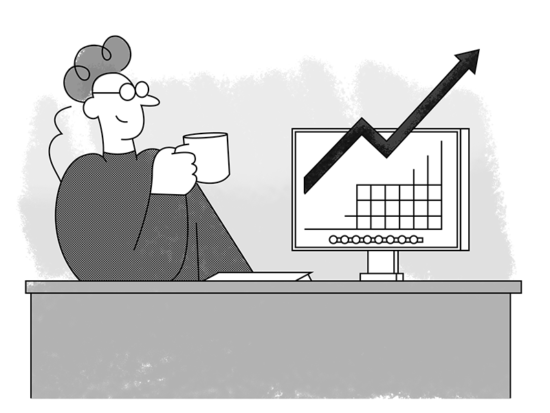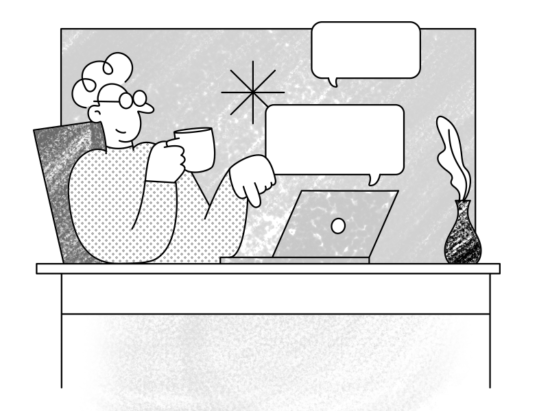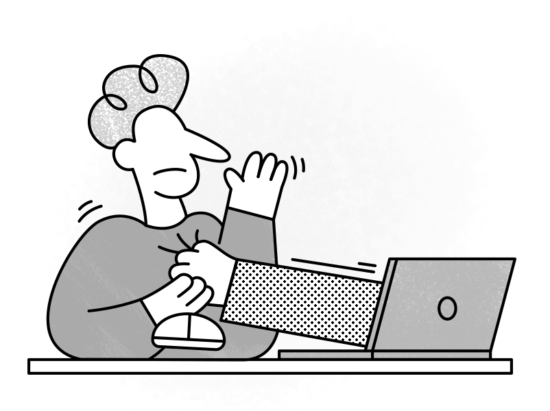Hopefully, your e-commerce shop will get A LOT of customers, and consumers, both newcomers, and returning ones.
Which is why it is imperative to maintain a friendly, one-to-one relationship with them.
Did you know that Americans tell an average of 15 people about a poor service experience and 11 people about a good experience? You could lose up to 16 consumers in a heartbeat!
Shocking right?!
Don’t worry; we got you.
One of the ways you can take care of customers is by sending specific types of personalized emails that won’t make you look like a spammer.
Right now, you are probably terrified thinking that you should send completely separate emails to each, and every customer. That’s far from the truth.
You need to create emails that are templates but don’t look like ones, and we are here to show you how to do that.
To help you turn new customers into loyal ones, and loyal ones into brand ambassadors, we have decided to make a list of all the customer service emails that often get overlooked. At the end of this post, we also wrote down a list of tips you should follow when creating each one of these emails.
Here are the emails:
“Thank you” email #1: When customers decide to refer people to you
The most famous customer service emails are, by far, the “Thank you” ones.
Every e-commerce site has a few or a number of loyal customers that are soooo in love with the brand they talk to their family and friends about it. They share their opinions about the quality of the products, shipping, customer support, etc. (That’s how word-of-mouth marketing was born.)
In this day, and age, customers don’t have to talk about how good some online shop is, and how awesome the products are. They could do it online, no hassle. Here’s how.
You can add to your e-commerce site the option for consumers to invite their friends, and family to make their purchases so that they can get a discount. This is a well-known move a lot of e-commerce sites use. Indeed, “Recommend Us”, or “Invite Friends” button, and a couple of % off can do wonders.
If customers decide to use this option, be sure to send them a thank you, as soon as they click on that “Invite Friends” button.
When it comes to this “thank you” email content, we would advise you to thank the customers, mentioning how lucky you are to have them, followed by a discount code. It’s that simple.
“Thank you” email #2: Celebrating anniversaries and birthdays
A customer made her/his first buy a year ago? Is it his/her birthday? Celebrate all these days by sending customer service emails that will remind them that you DO take care of their wellbeing, and are happy to celebrate their special day.
The content of the email should be similar to the previous “thank you” mail.
“Here’s a discount code” email: Using newsletter to stimulate potential customers to buy
Every e-commerce site should have a “sign up for a newsletter” section, where customers can subscribe to get the latest scoop on new products, discounts, sales.
Customers love seeing the discounts being brought right to their inbox, which is why we would advise you to focus on the newcomers. So, as soon as a new potential customers subscribe to your newsletter, be sure to send out an email to thank the users for subscribing and offer them a discount code. There’s no way the user won’t use the code!
This email content should have a friendly, almost heartwarming tone. Welcome the user to the “family”, and add a discount code. That’s it!
“Asking for a discount” email: Your way to customer satisfaction
Now, here’s a different situation.
Imagine the following scenario: you run an e-commerce shop that sells pre-made baby shower gifts (multifunctional, stylish diaper bags, animal-shaped baby monitors, etc.). You are one of the leaders in your industry 一 thousands of women trust your company to warm the hearts of future moms-to-be. Now, imagine that you received an email from a customer, Amy (a loyal customer). Amy is asking if she could get a discount on your “outstanding diaper cake”. She wanted to order it while it was on sale, two days ago, but she just hadn’t had the time. She’s hoping you would be kind enough to allow her to get it discounted, even if the diaper cake is no longer on sale.
In this situation, you have two options: you could say no, and lose Amy, or you could say YES, and watch how your customer base is growing.
Why are we encouraging you to give Amy a discount? Because Amy is a returning customer. She trusts your brand, and has no intention of buying, and never coming back again. If you think about it, it would be rude not to give her a discount.
Now, there’s one question left: should you give discount codes every time customers make a request? Definitely not. After all, you need to think about ROI, which is why we would recommend you learn how to negotiate. Here’s an interesting article on Hubspot’s blog, that will help you “bargain” your products like a pro.
“Taking care of the customer” email: Responding to angry customer emails
Ooops, you have an email from a raging customer.
Take a deep breath. Calm down.
The first thing you should know about Caps Lock-filled, angry emails is that it is that they are not that big of a deal. E-commerce businesses from all around the world face furious customers daily. In some cases, customers are angry due to some other factors that are not necessarily connected to your business (a lousy day at work, being stuck in a traffic jam, etc.).
When you do receive an angry mail, you need to be prepared to do damage control ASAP if you want to show just how much you appreciate your customers.
The first step you need to take when you receive this type of email is to, again, remain calm. The second, read the email carefully and get to resolving the issue. You should answer the angry email as fast as you can.
The third step is writing the response to this email. Since we know answering flaming mad emails is a tricky business, we wrote down some guidelines that will help you calm the users, and, hopefully, not lose them:
- Start the email like you naturally would, if this wasn’t an angry email.
- In the first line of your email, apologize to the customer for the inconvenience, and poor experience. Customers must be able to recognize that you understand their frustrations. More importantly, they should feel like you are willing to do anything to make their problems go away.
- In the second paragraph, you can mention how much customer satisfaction is important to you. Also, be sure to state that you are sorry for all the trouble customers went through.
- In the third line, you need to get to the bottom of the issue. If there’s something unclear regarding the problem a customer described, this is your chance to ask questions.
- In the fourth paragraph, you can mention how long it will take you to solve it. You can also mention when the problem is most likely going to be solved.
- Finish off the email by thanking the customers for reaching out, and openly addressing the issue.
Rules you need to follow when creating customer service emails
Now that you are familiar with the type of customer service emails you should be sending, it’s time you get to work. Start writing templates for all these emails.
Before you do that, we just wanted to name a few rules that you should follow before you start writing these templates:
- Customize each template. There is no doubt that templates are good starting points. But, if you don’t customize them, you’ll lose customers. Keep in mind that customers can “smell” when you are not empathetic, or helpful.
- The first template your write is probably not going to be The One template you’ll use. We would advise you to read the templates again, and again, revising them. You need to perfect them if you want them to work.
- NEVER EVER send a general template email! Huge mistake! Believe it or not, companies tend to make this mistake, so make sure you are not amongst them.
- Define voice, tone, language, and visuals you’ll use in each mail. If you need help with that, you can check out the article we wrote on how an online shop should take care of its customers.
- Personalize the sender. Instead of adding “Best, [Your Company’s Name] Support” at the very end of the email, communicate with your support staff, and suggest to them they could sign the email with their first and last name.
Are you ready to show appreciation to your customers?
You’d better be!
Hopefully, these tips will help you get loyal customers you deserve.
Now, don’t put it off, get to writing email templates. Good luck, you got this!



